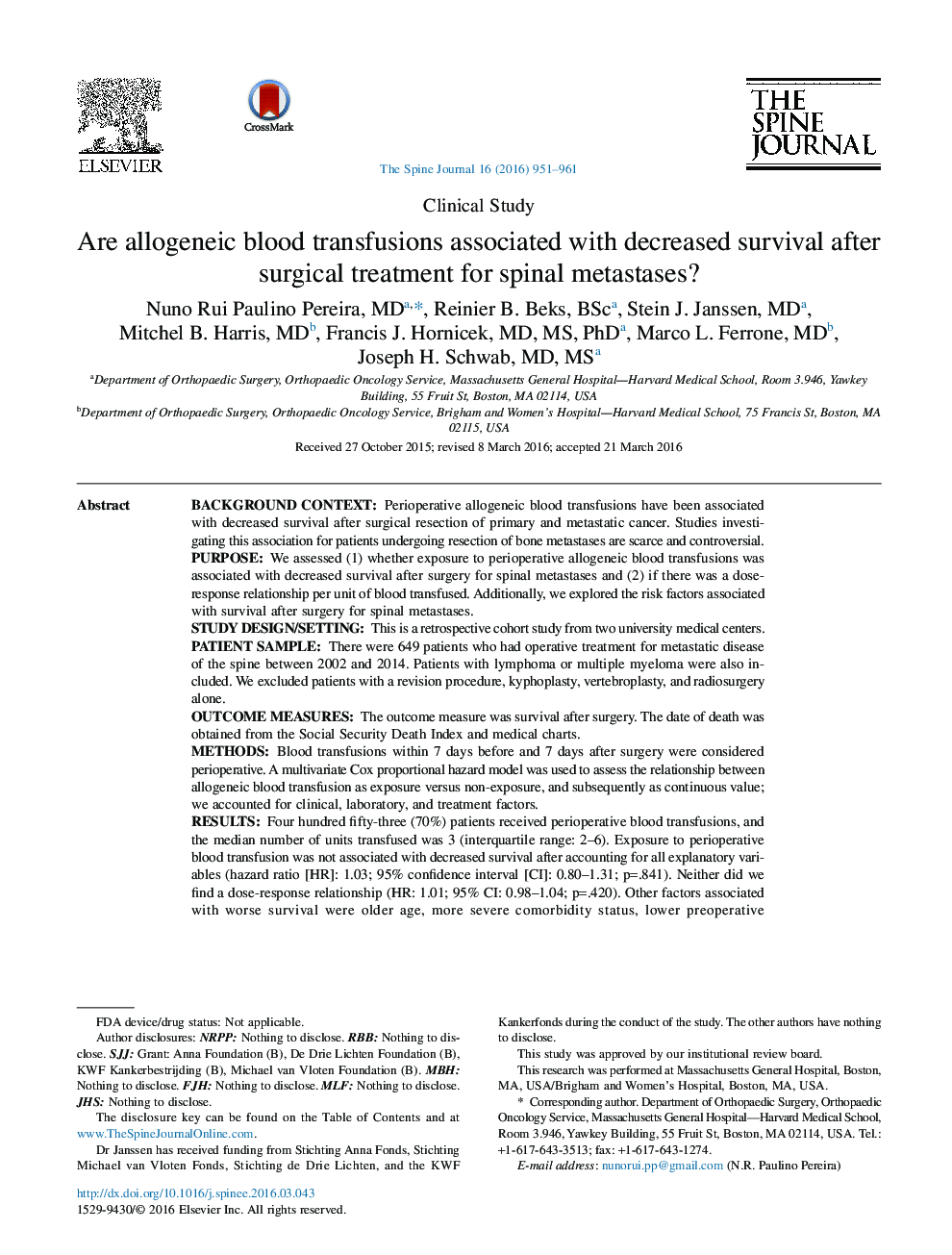| Article ID | Journal | Published Year | Pages | File Type |
|---|---|---|---|---|
| 4095793 | The Spine Journal | 2016 | 11 Pages |
Background ContextPerioperative allogeneic blood transfusions have been associated with decreased survival after surgical resection of primary and metastatic cancer. Studies investigating this association for patients undergoing resection of bone metastases are scarce and controversial.PurposeWe assessed (1) whether exposure to perioperative allogeneic blood transfusions was associated with decreased survival after surgery for spinal metastases and (2) if there was a dose-response relationship per unit of blood transfused. Additionally, we explored the risk factors associated with survival after surgery for spinal metastases.Study Design/SettingThis is a retrospective cohort study from two university medical centers.Patient SampleThere were 649 patients who had operative treatment for metastatic disease of the spine between 2002 and 2014. Patients with lymphoma or multiple myeloma were also included. We excluded patients with a revision procedure, kyphoplasty, vertebroplasty, and radiosurgery alone.Outcome MeasuresThe outcome measure was survival after surgery. The date of death was obtained from the Social Security Death Index and medical charts.MethodsBlood transfusions within 7 days before and 7 days after surgery were considered perioperative. A multivariate Cox proportional hazard model was used to assess the relationship between allogeneic blood transfusion as exposure versus non-exposure, and subsequently as continuous value; we accounted for clinical, laboratory, and treatment factors.ResultsFour hundred fifty-three (70%) patients received perioperative blood transfusions, and the median number of units transfused was 3 (interquartile range: 2–6). Exposure to perioperative blood transfusion was not associated with decreased survival after accounting for all explanatory variables (hazard ratio [HR]: 1.03; 95% confidence interval [CI]: 0.80–1.31; p=.841). Neither did we find a dose-response relationship (HR: 1.01; 95% CI: 0.98–1.04; p=.420). Other factors associated with worse survival were older age, more severe comorbidity status, lower preoperativehemoglobin level, higher white blood cell count, higher calcium level, primary tumor type, previous systemic therapy, poor performance status, presence of lung, liver, or brain metastasis, and surgical approach.ConclusionsPerioperative allogeneic blood transfusions were not associated with decreased survival after surgery for spinal metastases. More liberal transfusion policies might be warranted for patients undergoing surgery for spinal metastasis, although careful consideration is needed as other complications may occur.
